First impressions:
The cameras listed above are the only ones at the market (at the moment of Spring 2017th.) that fits completely for our objectives (round-the-clock photography near the ground-nesting passerine bird's nests). Camera lens focusing distance (40 centimeters according to documentation) allows getting perfect quality images while camera is set less than half meter before the nest (see photo below).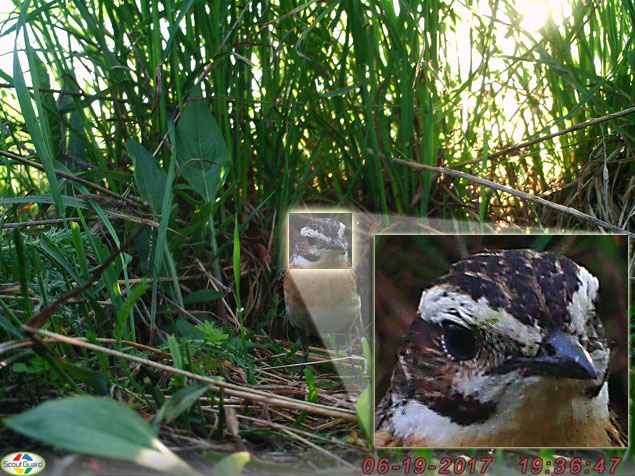
Image quality was varying depending on surrounding light and distance to the nest, but it was always good enough to identify appearing nest destroyers. The SG562-BW has a second focusing zone (120 cm), but we did not use it. The quality of images made with Bolymedia ornithological cameras at short range was much better than more expensive Bushnell models, which we used in similar conditions.
PIR trigger speed. The claimed trigger speed (1.2 sec) is significantly lower than Bushnell's — 0.3 sec. On practice this difference has never been crucial (at least for completing our objectives). Usually, both mature birds — nest owners, and predators were spending few seconds near the nest, which were more than enough for PIR-detector triggering and making a shot.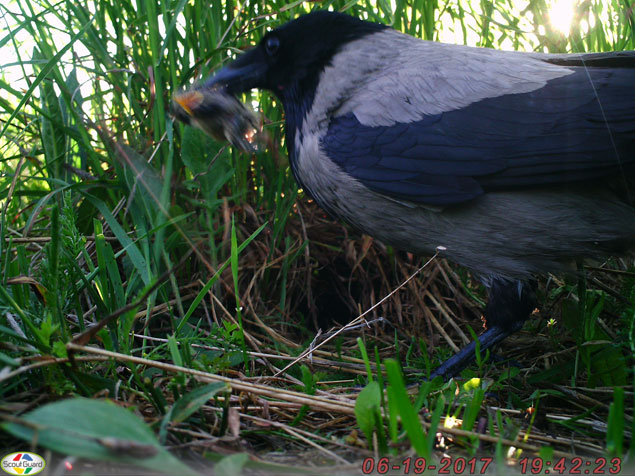
Night time mode. Another pleasant surprise was nighttime flash. It's power on both Bolymedia models was not so high, so we could take clear nighttime pictures on a working range of 50 cm. We had to use extra cover on night flash of Bushnell cameras, otherwise they made absolutely white pictures at night in same conditions.
Sorokoput LLC specialist's comment:
The power of IR flash in birdwatching Bolymedia cameras was lowered intentionally, in order to avoid blind illumination while capturing close moving objects. In other manufacturer's cameras (including Bushnell with macro-lens and their copies) night flash intensity is not adjusted.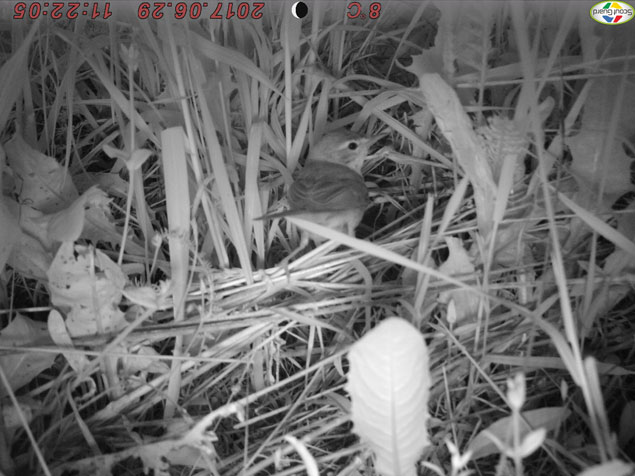
Battery life. The full set of batteries in SG562-BW is 8 AA batteries and 4 AA batteries for SG570-BW. We used 29 full sets of batteries in SG570-BW camera and 21 full sets in SG562-BW. Batteries brands were top models of GP, Duracell and Energizer, herewith we never mixed them between themselves in one set. SG570-BW has made an average of 3470 shots per one set of batteries (3077 — 5276), and SG562-BW — 4840 average shots (1901 — 8433). Seems SG562-BW have some significant problems with software (see below), perhaps this explains some of the lower values. In any case, considering the difference in the battery set (4 and 8), the SG570-BW was superior to the SG562-BW in battery vitality, which is related to the image size at minimum quality (1Mb and 3 Mb).
Software (Firmware). Software is little bit incomplete in both models. Main issue — time and date values have sometimes reset to default (even with charged batteries), which was very inconvenient during the solving of science objectives. Besides, SG562-BW cameras switched randomly from «photo» to «photo + video» mode few times. Also one of this cameras sometimes showed zero remaining battery charge with almost full battery set (even after less than 100 shots made), the problem was solved by restarting the camera.
Sorokoput LLC specialist's comment:
As the only official partner of Bolymedia in Russia, we are always in touch with the engineering department of the factory and trying to help them to improve their product. This concerns not only hardware part (cold conditions resistance, energy consumption) but also software. The received information about software failures will be transferred to the manufacturer and investigated. We consider, this will help to find causes and prevent any possible errors in future.
Camera lenses location. Camera lenses on the SG562-BW model is located in the bottom part of the body, so with the on-ground mounting of this camera making pictures at claimed distance (40 cm) was not possible. We solved this problem by turning the camera upside down, as a result the information string on the pictures made by SG562-BW was also turned in the same direction (see photo below). We didn't have that issue while using the SG570-BW model.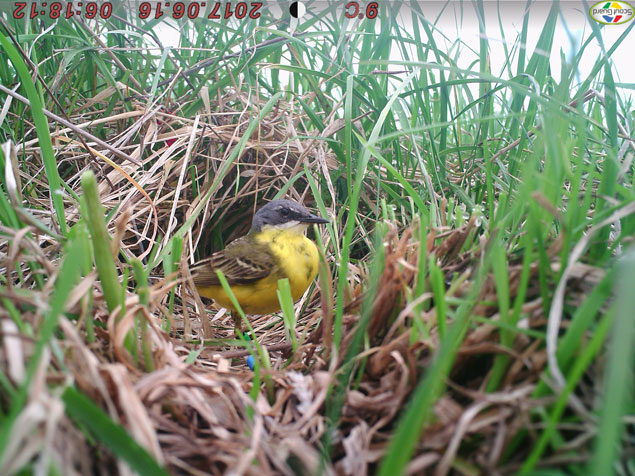
The battery and SD card slot of the SG570-BW model are located at the bottom end of the camera, that’s why you have to take the camera off every time for maintenance. Besides, on this model you are able to check battery status and options only with plugged-in wired remote. It seems like minimum battery charge level that required for remote control to work is higher that required for the camera to make pictures. That means, that at low battery the camera continues to shoot but the remote control doesn't work.
Conclusion:
Ornithological scouting cameras ScoutGuard SG570-BW and ScoutGuard SG562-BW by Bolymedia seem to be perfect for monitoring the nests of small passerine birds. Existing shortcomings are not critical and most of them may be solved with the software updates. In specific situations, like monitoring on-ground nests, the SG570-BW model is slightly better than the SG562-BW, due to its energy efficiency and more convenient camera lens location.
This scientific work was carried out with the organizational support of the leadership of National Park «Russkiy Sever» and financial support of the Russian Foundation for Basic Research (project 16-04-01383).
We would like to note that our company has been involved in the development and testing of ornithological scouting cameras for more than 3 years, and the first camera samples were presented in early 2016. At the moment, Bolymedia's BW series cameras are not only the tool for science research, but also a great present for any birdwatcher in the World. Thanks to its moderate price, which is 2 times lower than the analogue from the other manufacturer, Bolyguard birdwatching cameras are becoming more and more popular in Russia.





 Solar-wind power system at weather station 'Dzhuga'
Solar-wind power system at weather station 'Dzhuga'
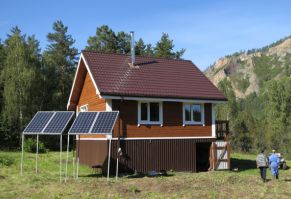 ‘Cordon-200’ energysystematcordon Synzhul
‘Cordon-200’ energysystematcordon Synzhul



